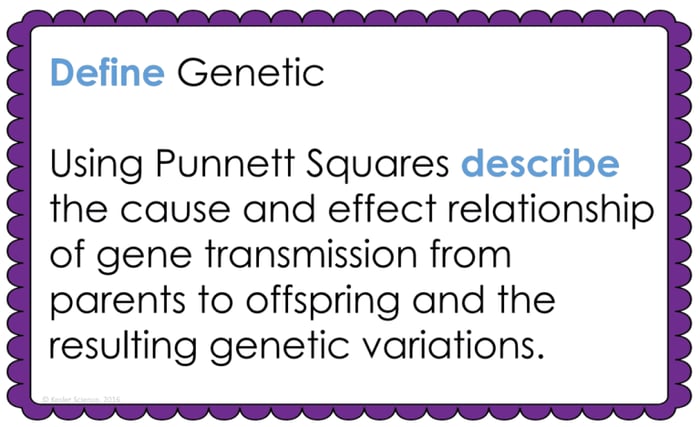
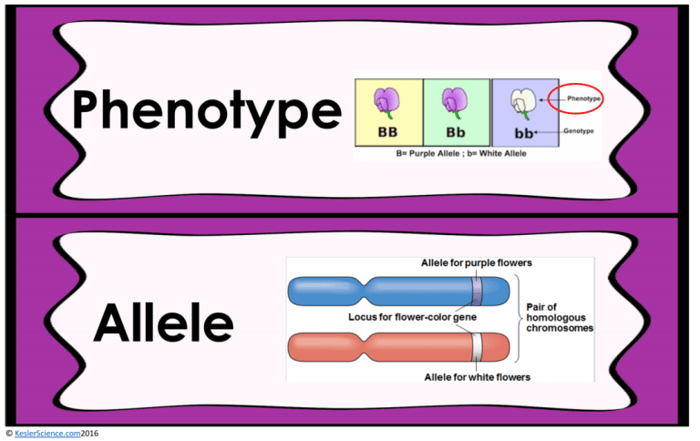
The teacher will help to clear any misconceptions about genetics. Students think you should use T for tall and s for short instead of T and t on a Punnett square. However, that would show two different genes which code for two different traits. A genotype contains two codes for the same trait, so two forms of the same letter should be used.
Estimated Class Time for the Engagement: 20-30 minutes
EXPLORATION
This student-centered station lab is set up so students can begin to explore genetics. Four of the stations are considered input stations where students are learning new information about genetics and four of the stations are output stations where students will be demonstrating their mastery of the input stations. Each of the stations is differentiated to challenge students using a different learning style. You can read more about how I set up the station labs here.
EXPLORE IT!
Students will be working in pairs to better understand genetics. Students will be using a chart to see if some the traits they might have are either dominant or recessive. Students will also look at a Punnett square to determine the percentages that an offspring will have of obtaining certain trait from their parents. Students will follow the steps and record their observations on their lab sheet.
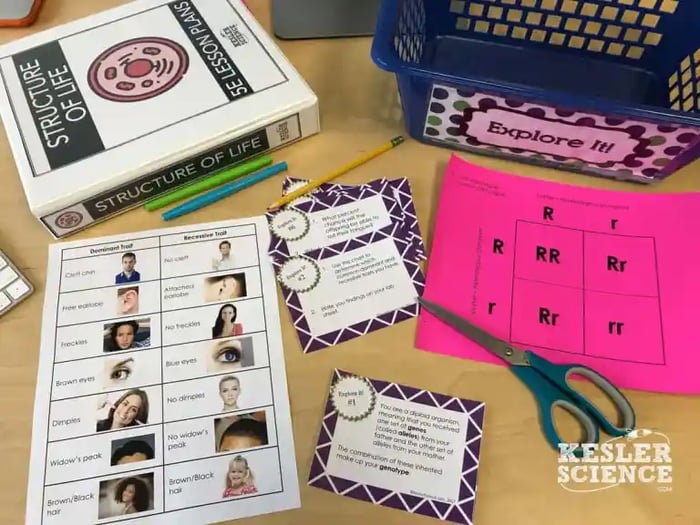
WATCH IT!
At this station, students will be watching a short video explaining Mendel's understanding of genetics through pea plants. Students will then answer some questions related to the video and record their answers on their lab station sheet. For example: What is an allele? What is the difference between homozygous and heterozygous? How can a recessive gene show back up after several generations?
RESEARCH IT!
The research station will allow students to explore an interactive web page that allows the students the ability to see how alleles cross and the resulting phenotype that occurs. Students will be instructed to complete a few tasks and record answers on their lab sheets.
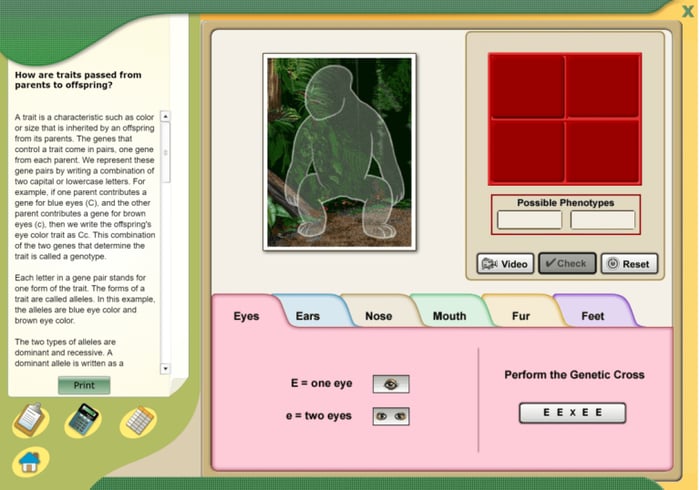
READ IT!
This station will provide students with a one page reading about the study of genetics. Students will get learn about the creator of the Punnett square, Reginald Punnett, and his use of the square that helped to explain Mendel's discovery with the pea plant. There are 4 follow-up questions that the students will answer to show reading comprehension of the subject.
ASSESS IT!
The assess it station is where students will go to prove mastery over the concepts they learned in the lab. The questions are set up in a standardized format with multiple choice answers. Some questions include: Which statement is true about Punnett squares? Which allele pair would be considered homozygous dominant? Which statement is true about recessive genes?
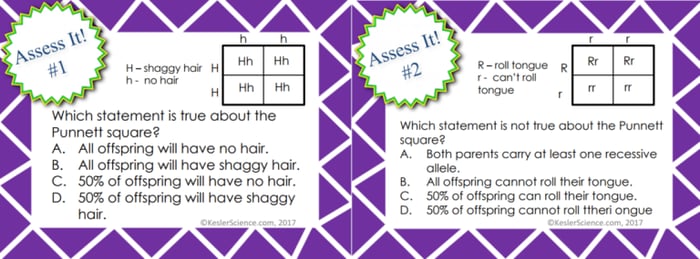
WRITE IT!
Students who can answer open-ended questions about the lab truly understand the concepts that are being taught. At this station, the students will be answering three task cards: Describe how traits are passed from parents to their offspring. Explain why Punnett squares are used in genetics. Describe the difference between dominant and recessive alleles.
ILLUSTRATE IT!
Your visual students will love this station. Students are given the opportunity to create 2 Punnett squares for 2 different traits. Students will choose their own genotype from the Punnett square and label it as either homozygous dominant or recessive, or heterozygous dominant or recessive. Finally, students will have to list the probability percentage that this trait will be passed on to the offspring.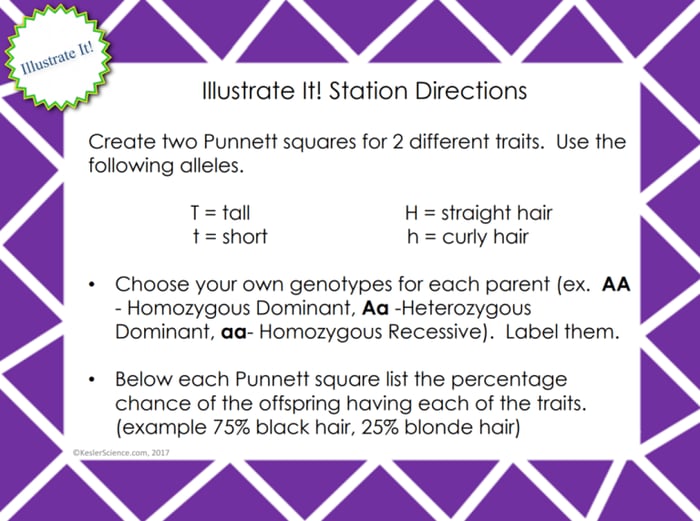
ORGANIZE IT!
The organize it station allows your students to lock in the terms used in this lesson with the correct definitions. Once students have completed their organization, the teacher will come and check their understanding.
Estimated Class Time for the Exploration: 1-2, 45 minute class periods
EXPLANATION
The explanation activities will become much more engaging for the class once they have completed the exploration station lab. During the explanation piece, the teacher will be clearing up any misconceptions about genetics with an interactive PowerPoint, anchor charts, and notes. The genetics lesson includes a PowerPoint with activities scattered throughout to keep the students engaged.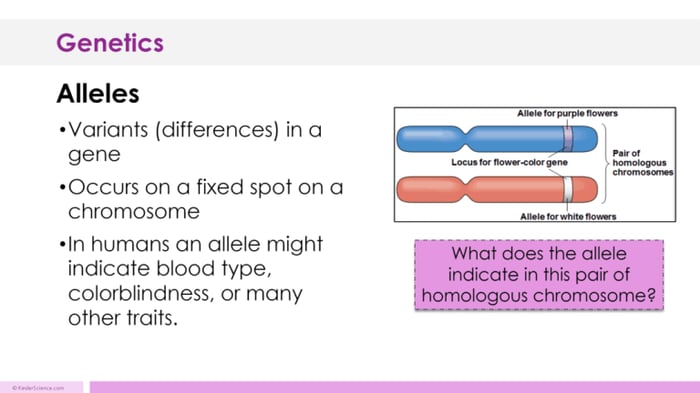
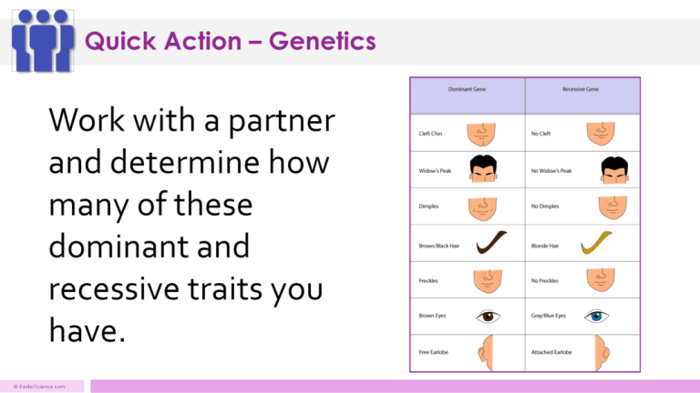
The students will also be interacting with their journals using INB templates for genetics. Each INB activity is designed to help students compartmentalize information for a greater understanding of the concept.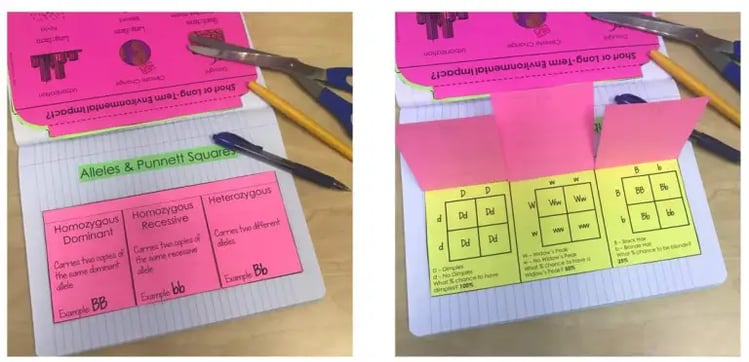 Estimated Class Time for the Exploration: 2-3, 45 minute class periods
Estimated Class Time for the Exploration: 2-3, 45 minute class periods
ELABORATION
The elaboration section of the 5E method of instruction is intended to give students choice on how they can prove mastery of the concept. When students are given choice the ‘buy-in’ is much greater than when the teacher tells them the project they will have to create. The elaboration project will allow students to create a number of different project ideas ranging from explaining, more in-depth, Mendel's research to explaining genetic mutation.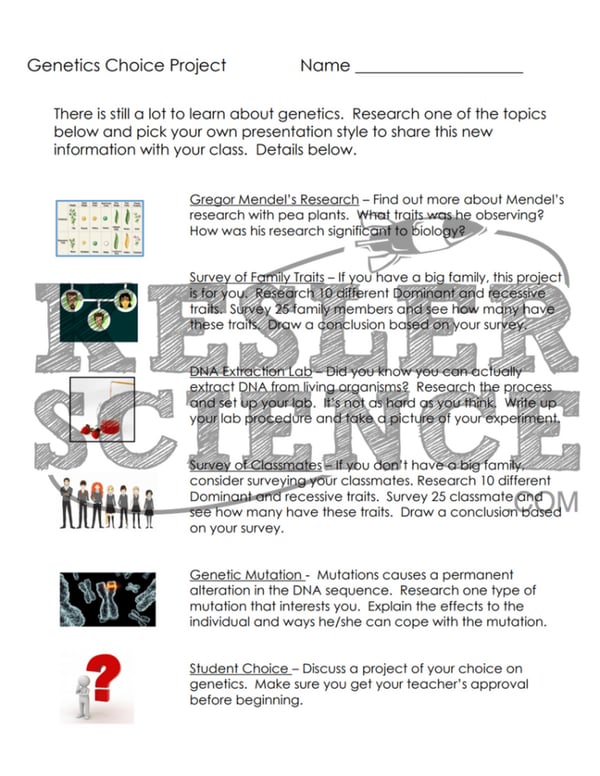 Estimated Class Time for the Elaboration: 2-3, 45 minute class periods (can also be used as an at-home project)
Estimated Class Time for the Elaboration: 2-3, 45 minute class periods (can also be used as an at-home project)
EVALUATION
The final piece of the 5E model is to evaluate student comprehension. Included in every 5E lesson is a homework assignment, assessment, and modified assessment. Research has shown that homework needs to be meaningful and applicable to real-world activities in order to be effective. When possible, I like to give open-ended assessments to truly gauge the student’s comprehension.
Estimated Class Time for the Elaboration: 1, 45 minute class period
DOWNLOAD THE FULL LESSON NOW
The full lesson is available for download from my TpT store. Save yourself a ton of time and grab it now.





